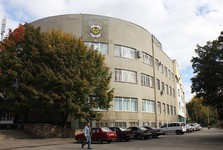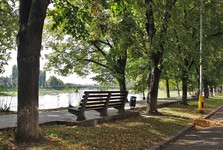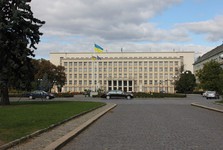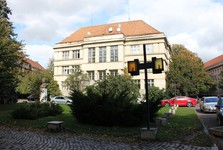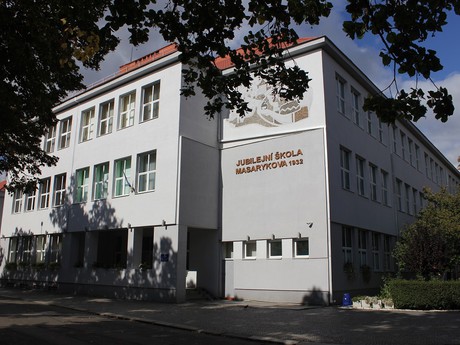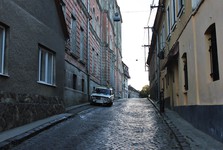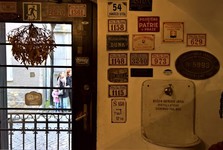Ukraine, Uzhorod – The Paradise of Architecture of the First Czechoslovak Republic

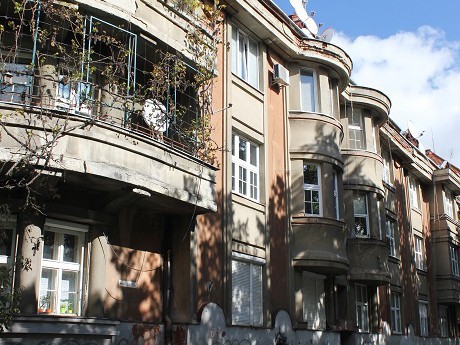 Carpathian Ruthenia became part of Czechoslovakia right after it declared independence on October 28, 1918. Uzhorod was political and cultural center of this region troubled by economic, technological and cultural backwardness. Yet Czechoslovak government was determined to change this. Local standards of living were absolutely different from the rest of the country. To smoothen such differences across the country, financial funds streamed to Carpathian Ruthenia to finance construction of buildings, railways, roads, airports, and many Czechs arrived in the region to "elevate" it. Networks of schools and hospitals were built to tackle low literacy levels and improve hygiene and health of the population. Seats of governmental institutions were constructed in Uzhorod. Moreover, it was necessary to build accomodation to all the new government officials. Therefore, by the river Uzh Little Galago district was built. It is very similar to Dejvice district, Prague.
Carpathian Ruthenia became part of Czechoslovakia right after it declared independence on October 28, 1918. Uzhorod was political and cultural center of this region troubled by economic, technological and cultural backwardness. Yet Czechoslovak government was determined to change this. Local standards of living were absolutely different from the rest of the country. To smoothen such differences across the country, financial funds streamed to Carpathian Ruthenia to finance construction of buildings, railways, roads, airports, and many Czechs arrived in the region to "elevate" it. Networks of schools and hospitals were built to tackle low literacy levels and improve hygiene and health of the population. Seats of governmental institutions were constructed in Uzhorod. Moreover, it was necessary to build accomodation to all the new government officials. Therefore, by the river Uzh Little Galago district was built. It is very similar to Dejvice district, Prague.
Czech architects worked these tasks. They intended to spread the idea of Czechoslovakia through art. If you love the architecture of the first Czechoslovak Republic you will love Uzhorod. Moreover, there are many original details which have withstood time long time. The historical documents point out to the fact that Czech architects designed new development and adjustments to urban plan of Uzhorod after the year 1918. Josef Gocar was by far the most important architect of them. He had already overcame his cubist period so expect more straightforward lines. He designed local department store Bata and the building of the post. The corner facade of the post office is particularly underlined.
The design of the new district for officials called Little Galago was designed by the architect Adolf Liebscher Jr., the son of the painter Adolf Liebscher. Liebscher applied classicist style and, in some cases, rondocubism (even though it was quite stripped down). Rondocubism with all its arches, semi-circles, or targets on the facade which represented the architectonic style used for official buildings of the state. Also, Liebscher made use of the regulated right riverbenk of the Uzh river and planted a lime alley, the longest in Europe as it has been claimed.
If you start talking with somebody older, you will realize that they fondly remember President T. G. Masaryk and the Czechoslovak era. The T. G. Masaryk Club here is a compatriot society which brought back some names (Masaryk School) or unveiled the busta of Masaryk. In case you want to see some more remnants of the Czechoslovak past in Uzhorod, visit a cafe/museum in Ivan Olbrach street.
GPS: (letiště) 48°38'12.7"N 22°16'22.4"E
Text and photos: Kateřina Holečková
| Discussion at the article (0) |
Related Articles

Ukraine, Lviv – Tastes, Aromas, Tones of Wester Ukraine – VIDEO

Ukraine, Lviv – Charming Center of Western Ukraine – VIDEO

Ukraine, Kiev – Ancient Metropolis – VIDEO

Zakarpattie Region, Kolocava – Following the Traces of an Outlaw

The Zakarpattia Region – The Lake of Miserable Lovers

The Zakarpattia Region – From As to Jasina is Our Homeland
Related Photogallery

Ukraine, Lviv – A Cultural Gem
Related Videos

Ukraine, Lviv – Tastes, Aromas, and Music of Western Ukraine

Ukraine, Lviv – Charming Center of Western Ukraine

Ukraine, Kyiv – Ancient City
Guide:
Important Information:
![]() Information and warnings on travelling abroad is to be found HERE.
Information and warnings on travelling abroad is to be found HERE.


